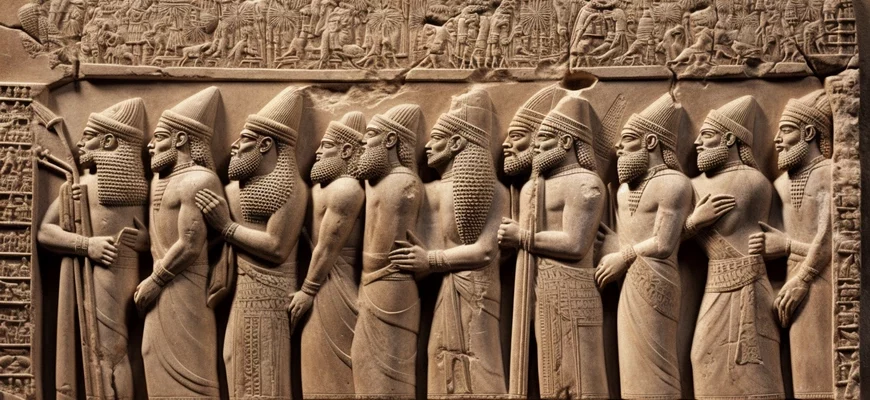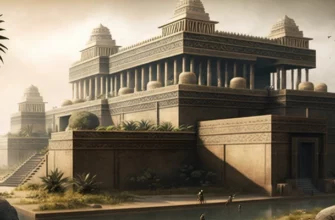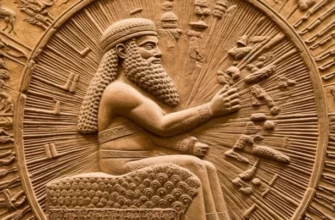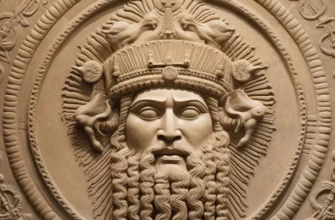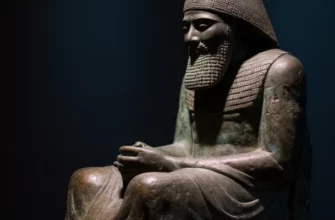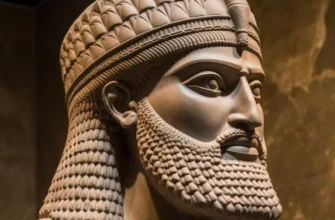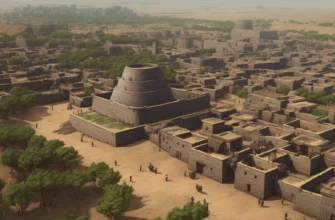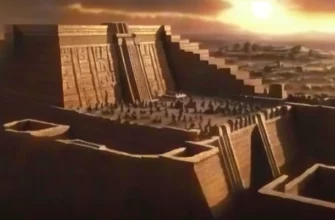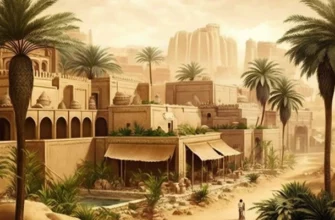The Sumerian era is a period in the history of the East that dates back to 4-3 thousand BC and is associated with the formation of the first civilizations on the territory of Sumer (modern Iraq). The Sumerians were among the first peoples to engage in agriculture, develop writing, and create a complex system of cults and religious beliefs. The Sumerian era is one of the key periods in the development of human civilization.
The importance of the Sumerian era for human history
The Sumerian era is of great importance for human history, as it was a period when the peoples of the Eastern Near East became the first in history to transition from a primitive way of life to a complex civilization. The Sumerian peoples created the first writing system, which became the basis for the development of literature and science. In addition, the Sumerian era was a time when the first communal cults were formed, which became the basis for the development of religious and cultural traditions throughout history. Also, during this period, there was a great deal of economic activity, which became a prerequisite for the development of trade and international relations in the future. All these achievements became a prerequisite for the further development of human history and influenced the formation of modern world culture.
The formation of communal cults
The Sumerian era is one of the key periods in the formation of communal cults. The Sumerian peoples created a complex system of cults and religious beliefs based on the worship of various deities that symbolized natural phenomena, human qualities, and ideas.
At the heart of Sumerian religion was the idea of communal responsibility to the gods and the need to ensure the grace and fertility of the land. The Sumerians understood that the development of the economy and agriculture depended on the favorable influence of the gods, so religion had a huge impact on the lives of these peoples.
The ritual practice of the Sumerian religion included various ceremonies that took place in temples and on the streets of cities. These ceremonies included prayers, sacrifices, and various rituals aimed at ensuring the well-being of the people and the economy.
Taken together, the cultural heritage of the Sumerian era played a huge role in the development of religion and culture throughout history, and its influence can still be felt today.
Description of the formation of community cults in Sumer
The formation of community cults in Sumer began in the 4th-3rd millennium BC. These cults were based on beliefs in various deities, each of which symbolized natural phenomena, human characteristics, and ideas. The Sumerian peoples believed that the gods controlled all aspects of life, from nature to human relationships.
At the heart of Sumerian religion was the worship of deities, which were represented in temples in the form of statues and symbols. These temples served as centers of religious and social life, where various ceremonies and rituals took place. The Sumerians performed prayers, sacrifices, and other religious rites to ensure the well-being of their community and economy.
In addition to religion, the Sumerian peoples had their own cultural traditions, which also influenced the formation of community cults. For example, they held celebrations that included music, dancing, and games. Local leaders and shamans, who coordinated religious and cultural activities, also played an important role in the formation of the cult.
Overall, the formation of community cults in Sumer was a complex and lengthy process that played an important role in the development of religion and culture throughout history.
Features of community cults
Community cults of the Sumerian era had their own characteristics that distinguished them from other religions of the time. One of the features was that each community had its own deity, which they worshipped and which symbolized their characteristics and needs.
Another important feature was that community cults were collective in nature. Rituals and ceremonies were performed not at the individual level, but at the community level. This allowed people to feel part of a common group and a strong community, which was important for ensuring stability and well-being in the community.
Another feature of the communal cults of the Sumerian era was their role in shaping social relations. The cult was not only a religious phenomenon, but also a means of strengthening relationships between people and solving social problems. It regulated interpersonal relationships, established order in the community, and ensured responsibility before the deities.
In addition, community cults had a significant impact on the development of art and culture. Each cult had its own characteristics, including music, dance, poetry, and other forms of art, which became an integral part of the cultural heritage of Sumer.
In general, the communal cults of the Sumerian era were an important phenomenon in the development of religion, culture, and social life at that time. They gave rise to many other religious
and cults and influenced the formation of socio-economic relations, which was significant for the further development of civilization. In addition, the communal cults of Sumer influenced the development of other cultures and religions in the future, such as Egyptian, Greek, Roman, and others. Thus, the Sumerian era with its communal cults is of great importance for the history of humanity and its spiritual heritage.
Description of the characteristics of communal cults
A distinctive feature of the communal cults of Sumer was that they were associated with specific localities and dedicated to certain deities that reflected the characteristics of the life and activities of the population. Each city had its own gods and shrines, which were the center of worship and a gathering place for the community. In addition, communal cults were democratic in nature and accessible to all members of the community, which supported social equality and unity among the population. All segments of the population, from merchants to artisans and peasants, participated in cult rituals, which contributed to the formation of community unity and identity. Another important feature of the communal cults of Sumer was their role in supporting economic development and the development of crafts, as cult centers were places of trade and exchange of experience between masters.
Religious, social, and political aspects of cult activity
Religious, social, and political aspects were important components of cult activity in the Sumerian era. Religious activity was associated with the worship of deities and the performance of rituals, which contributed to the formation of the spiritual world of the population and its cohesion. The social aspect was that cult centers were places where the community gathered and ensured the social integration of the population. Cult centers also served as places for various commercial transactions and interaction between craftsmen, which contributed to the development of the economy and crafts. The political aspect of cult activity was that deities were important symbols of power that controlled various spheres of life, from nature to the economy and politics. Thus, cult activity was important for the religious, social, and political life of Sumer.
Conclusion
Sumerian era – the oldest cults was an important period for the development of religion and culture. The formation of community cults, which were aimed at worshipping deities and performing rituals, played an important role in shaping the spiritual world of the population and uniting communities. Cult centers also served as places for community gatherings and ensured the social integration of the population, which contributed to the development of the economy and crafts. The political aspect of cult activity was that deities were important symbols of power that controlled various spheres of life. The study of the history of religion and culture is important for the development of the modern world, as it provides an opportunity to understand the historical context and the influence of cultural and religious traditions on the development of human society.
